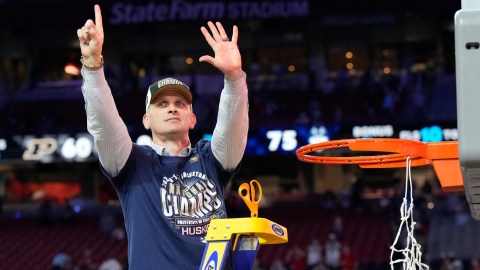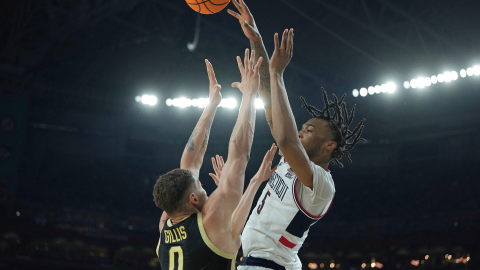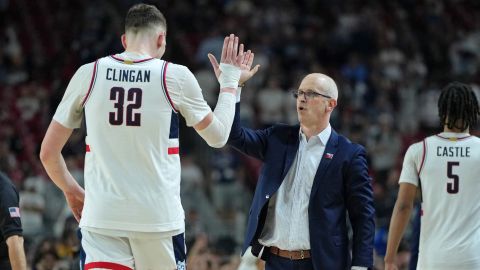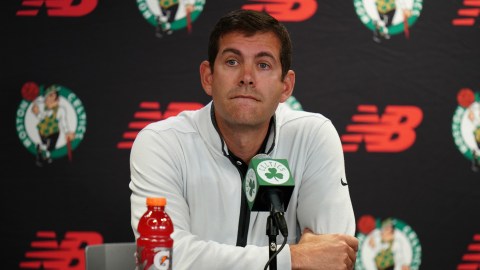What difference does one year make in a person’s life?
In most cases, it depends on the person and it depends on the year. A child might say it’s a big difference, while an adult in his or her mid-30s might say the difference is negligible.
For professional athletes, the answer is consistent. One year can make all the difference in the world. That year can be a time when a professional athlete raises his or her game to the next level. Or it can be a time when he or she suffers a devastating injury and is never the same.
NBA commissioner David Stern is banking on the former as he asks the players association to approve a one-year increase to the NBA’s minimum age limit. He is hoping that the difference between a 19-year-old draft prospect and a 20-year-old draft prospect is overwhelmingly positive.
But Stern is wrong to hope for that.
When the NBA first instituted a minimum age limit in 2005, Stern claimed to want scouts and talent directors out of high school gyms. His cause was a noble one, and he succeeded. With the current rule (a minimum age of 19 years and at least one year removed from high school), the pressure on high school athletes to excel has been dramatically decreased.
It’s safe to consider Stern’s original mission accomplished. So why is he coming back to the issue, pushing for a minimum age limit of 20?
According to a report from NBC Sports, Stern told reporters that the increase will only help the NBA improve.
“We don’t think it’s appropriate for us to lecture kids as to whether they should or shouldn’t go to school,” he said. “For our business purposes, the longer we can get to look at young men playing against first-rate competition, that’s a good thing. Because draft picks are very valuable things.”
At least he has half of this right — college isn’t for everybody and the NBA isn’t in any place to tell a person if it is. But in a way, they still are.
The NBA will gladly welcome players as young as 18 years old to compete in the D-League, or even wish them well should they decide to compete in Europe or elsewhere abroad. But in both scenarios, that player is almost certainly resigning himself to a less promising future.
College basketball is almost the only route a player can take out of high school if he hopes to compete against the best talent and to get the publicity and attention he likely deserves.
The NCAA tournament final alone drew over 14.6 million viewers on Monday night. The tournament — and, more broadly, all of Division I college basketball — continues to garner dizzying television ratings and rake in millions of dollars in revenue. For a player to decide not to be a part of that is equivalent to a player deciding not to display his abilities to the widest audience possible, thus diminishing his perceived value.
With the choice almost made for them, most talented high school basketball players take the college route. For some, a clean college career is maintained. For others, NCAA violations or injuries ensue.
Regardless of how their careers go, players with NBA dreams have to wait at least a year before going pro. And for athletes who plan to make a living off of their natural gifts, even something as simple as age is the enemy.
Professional athletes’ careers generally last between three and five years, with the NBA falling closer to five, according to a league-wide survey conducted in 2007. With such fleeting careers, every year counts. Injuries and deteriorating ability are always around the corner, and in a world where new talent is always on the rise, players don’t have much time to establish themselves. For the safety and protection of the athletes’ careers, the one-year minimum is almost more than enough.
Take some of the most talented players in the league as examples and it’s not hard to understand why. Kobe Bryant, Dwight Howard and LeBron James all went to the NBA straight out of high school. Had they played in college instead, they would not have earned a salary while still putting strain on their bodies that could have diminished their talents or caused a value-sapping injury.
Instead, they decided to forego college basketball and profited from their athleticism immediately. They didn’t adhere to the risk of losing their value during a year in which they played for free.
And as for the competitive balance that seems to be at the heart of Stern’s argument, it’s hard to understand why he believes that an extra year of observing an athlete will make that much difference in his perceived value.
Those same three players were all taken in the first round of their respective NBA drafts. Sure, Bryant was taken 13th overall, but his draft featured a talented 1996 class that included Ray Allen and Allen Iverson. Howard and James, on the other hand, both went first overall. Today, those three players dominate the headlines as some of the most talented and well-known players in the world. And it’s not like it took them long to get involved.
Howard set records as the youngest player to ever average 12 points and 10 rebounds per game and the first rookie out of high school to start all 82 games. James also excelled, becoming the youngest player to score 40 points in a game and only the third player in league history to average 20 points, five rebounds and five assists in his rookie year.
While players directly out high school were — and likely still are — capable of competing in the NBA, Stern’s one-year rule has value and has brought that value to fruition. High school athletes face less pressure nowadays, and the NBA can focus on the college game rather than flooding local gymnasiums.
But what would adding a second year to that limit accomplish?
Those goals have been acheived and competitive balance is just like it was when there was no rule at all. Players like Derrick Rose, Kevin Durant and Blake Griffin entered the league talented and capable of competing.
The extra year Stern is pushing for would likely provide nothing but more opportunity for talented athletes to get injured without generating income from their abilities. There is no benefit for the players, there is no benefit for the league and the original goals of the rule have all been met already.
There’s no need for an extra year. After all, those 365 days could be the difference between a potential NBA career and seeing all the rewards of that career disappear in an instant.



